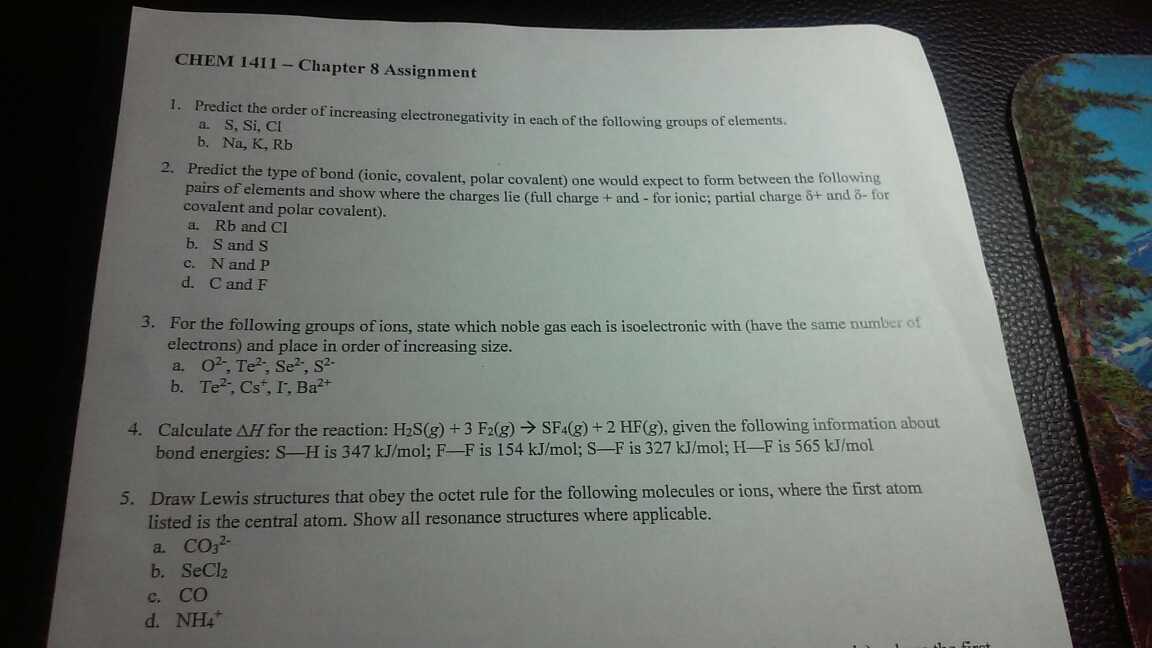
Solution:
1)
Electronegativity increase from left to right in the periodic table because of octet rule.
Electronegativity decreease from top to bottom in periodic table because of atomic size.
a) Silicon < Sulfur < Chlorine [rule 1 above]
b) Rubidium < Potassium < Sodium [rule 2 above]
2)
a) Ionic: Rb+ Cl-
b) Covalent: S = S
c) Polar Covalent N $ \equiv $ P (electron will be more close to N than P)
d) Covalent $ CF_4 $
3)
Atomic radius increase from right to left (they share similar orbitals in the same row, but with increased number of protons the orbital size decreases)
Atomic radius increase from top to bottom due to adding more orbitals.
a) $ O^{2-} < S^{2-} < SE^{2-} < TE^{2-} $, this is rule 2
They are isoelectronic with Ne, Ar, Kr, Xe respectively
b) $ I < Te < Ba < Cs $, this is rule 1 and rule 2 combined.
They are isoelectronic with Xe, Xe, Rn, Rn respectively.
4) We need to break 2 H-S bond, 3 F-F bond, that requires energy
$ 347 \times 2 + 154 \times 3 = 1156 KJ $.
Then we form 4 S-F bonds, 2 HF bonds, that give out energy
$ 4 \times 327 + 2 \times 565 = 2438 KJ $.
Therefore the reaction is $\delta H = 1238 - 2438 = -1282 KJ $
No comments:
Post a Comment